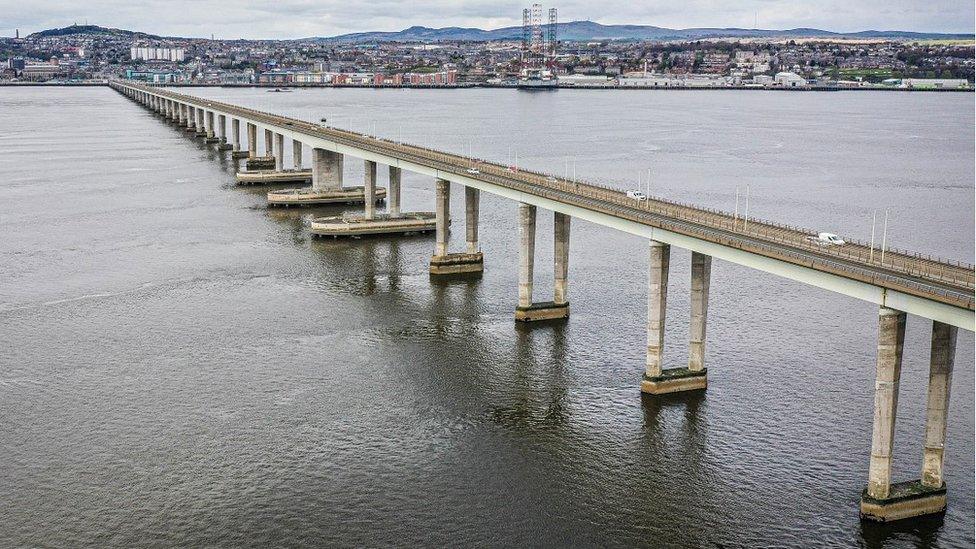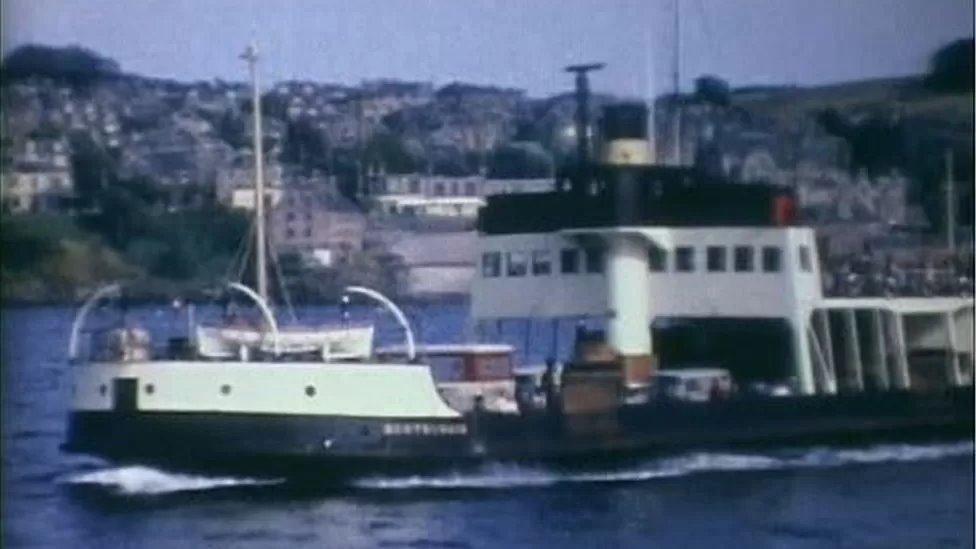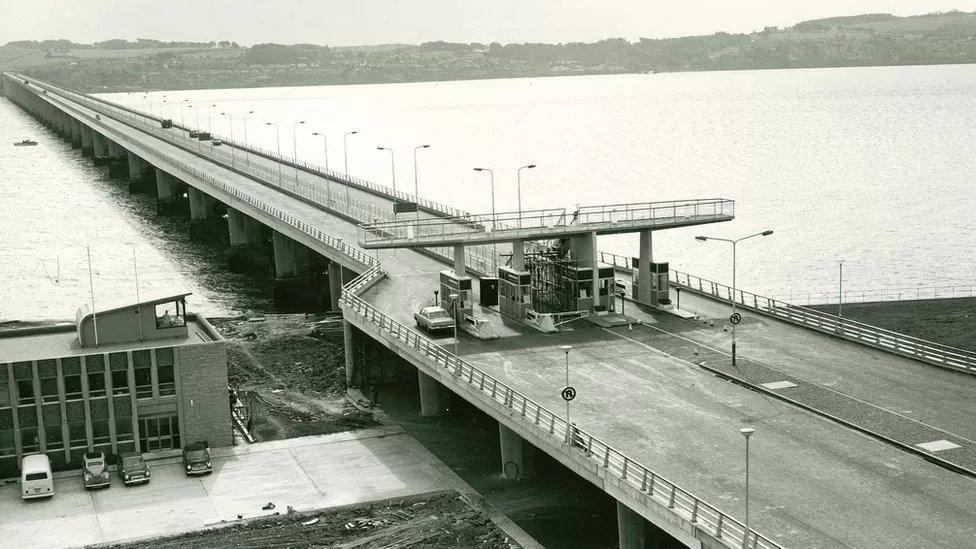Tay Road Bridge bosses rejected return of ferries during roadworks
- Published

The work will take place in early June, and again in spring and summer 2024
Tay Road Bridge bosses considered bringing back the river's ferry service to reduce traffic during planned major roadworks, it has been revealed.
Reinstating bridge tolls was also one of 21 options considered ahead of the work, which begins next month.
The options were rejected in favour of a contraflow system which will be in place while the work is carried out.
The original surface of the bridge will be completely removed and replaced for the first time in its 57-year history.
The work will take place in early June, and again in spring and summer 2024.
One carriageway will close and both Fife and Dundee-bound traffic will use the other carriageway on a single lane basis.
The speed limit on the bridge will be reduced from 50mph to 30mph while the work is carried out.

The opening of the Tay Road Bridge in August 1966 spelled the end of the "Fifies"
The Tay Ferries, known affectionately as The Fifies, transported vehicles and generations of passengers between Dundee and Newport-on-Tay.
The last ferry sailed hours after the bridge was opened in August 1966.
Its surface will be stripped down to the concrete bridge deck as part of the new work and waterproofing applied before a new asphalt surface is laid.
More than 90 new expansion or movement joints will also be installed.

The original surface of the bridge will be completely replaced for the first time in its 57-year history
Tay Road Bridge Joint Board chairman Gary Holt said the board commissioned an appraisal of alternative transport options to reduce the impact on bridge users.
He said: "The consultants looked at a total of 21 options, which mostly fell into three categories - bus, rail and park and ride/stride, although reinstatement of tolls and ferries were also included.
"When the options were evaluated, as well as the aim of reducing peak time traffic, the consultants also considered practicality, value for money and opportunities for making longer-term improvements."